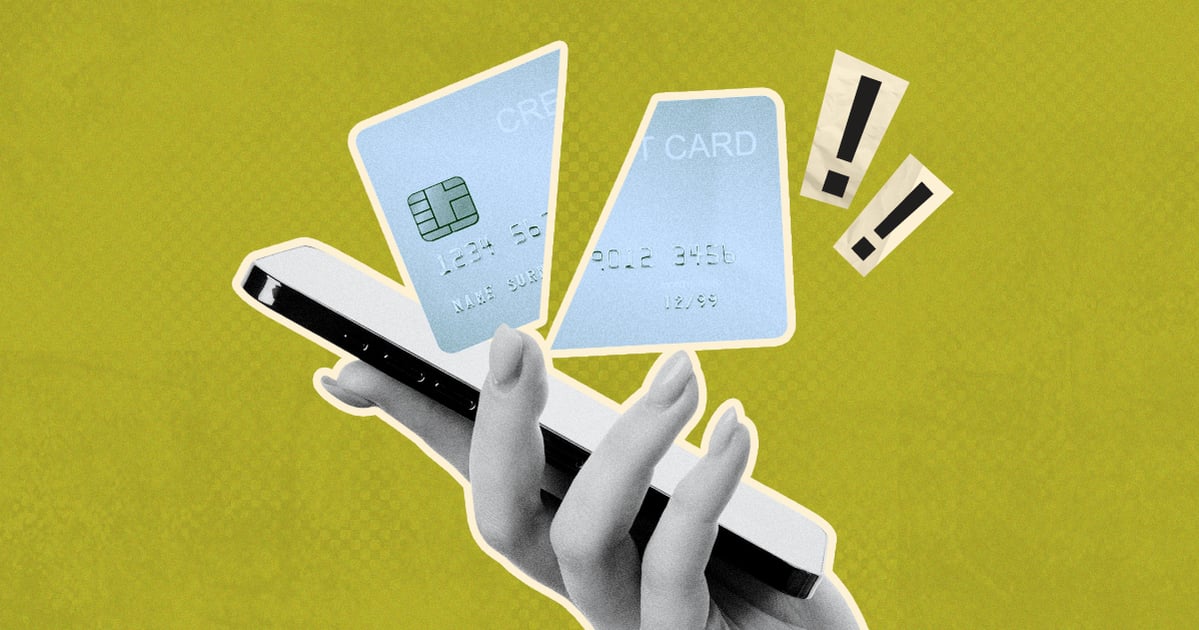When freelance writer Jamie Feldman shared she was $18,000 in debt on TikTok in July of 2022, she had no idea what would happen. Talking to the camera, she begins a month-long journey to not eat out and not buy clothing to make a dent in her debt – and soon, she was gaining like after like and follow after follow. “I didn’t really think that was going to turn into anything, honestly,” Feldman says.
Now, nearly two years later, she’s garnered more than 47,000 followers and has even started a podcast, “Debt Heads,” alongside her friend Rachel Gayle Webster. “I had built my byline and my career of talking really openly and honestly and trying to make content that helps people feel seen,” says Feldman. “And I just realized that [debt] was a huge [issue] that people were dealing with but not really talking about.” Feldman is now down to four-digit debt.
Money transparency – particularly paying down debt – has seen a spike across social media outlets. One search of “debt transparency” on TikTok will give you thousands upon thousands of videos of creators sharing their own debt, and what they’re doing to pay it off, alongside their personal experiences of why they have that debt and why they’ve decided to choose now to really work on it.
Debts range from student loans to mortgages to more serious credit card debt, and everyone’s story is different. But for many following their journeys, they’re inspiring. A 2023 Clever Real Estate survey found that 3 in 5 Americans (61 percent) are in credit card debt. And according to the most current debt figures available from the Federal Reserve Bank of New York and the US Census Bureau, the average owed is $7,951. That same Clever Real Estate survey reports that nearly 23 percent say they go deeper into credit card debt every month and 14 percent say they have missed a payment.
“People are sort of standing proudly and saying, this is the situation that I’m in and here’s what I’m doing to change it or to remedy it,” says financial therapist Amanda Clayman. “I think it’s a way of reclaiming power that’s really, really positive and can help us not only reframe the experience and the effort of paying off debt, but they’re also doing another thing, which is sharing their vulnerability in a way that connects them with other people who either are in a similar situation or have empathy for the situation that they’re in.”
Experts Featured in This Article
Amanda Clayman is a therapist and coach specializing in financial wellness.
Clayman notes that sharing one’s debt journey is both a reclaiming of dignity, and a push back against cultural norms that tell us there is only shame associated with debt.
Kendall “KB” McGill has been sharing her life online for more than 10 years, but last year decided to open up more to her followers about her debt journey. “Typically this is something that’s really embarrassing – having so much debt or being in so much financial trouble,” says McGill. “But I just decided that I wasn’t going to be ashamed anymore and I was going to start baring my truth on social media.”
With 106,000 TikTok followers, 51,000 on Instagram, and 37,000 on YouTube, McGill started sharing her journey when she was about $120,000 in debt (with a car loan, student loans, and credit card debt). Now, she’s down to about $70,000 in debt, working as a project manager.
“I just decided that I wasn’t going to be ashamed anymore.”
Both Feldman and McGill note that by sharing their journeys, they’re also seeing a lot of others relating to their content and expressing their own debt numbers. “I started hearing from people that it was really helpful, that it was helping people feel like they weren’t alone and that they didn’t need to feel shame, and that this is not something that’s exclusive to them,” Feldman says. “I mean, this is a huge issue in this country that the majority of Americans are dealing with, and yet you’re made to feel like you’re an anomaly if you are having financial struggles. And that was something that started to become really clear as I started talking to people that were following me.”
“I knew a lot of people carried debt, especially in America or in our society, but hearing some of the numbers . . . I’ve heard people with six-figure student loan debt, even six-figure credit card debt,” McGill says. “I think that’s the bittersweet piece of all of this. Because it’s like, wow, what can we do as a society to get out of this mess so that we can live more fruitful lives financially?”
Feldman and McGill are not the only ones sharing their debt journeys online, and they encourage others to do so too if they decide it’s right for them. But there are things to keep in mind when sharing these stories. For one, you’re going to have trolls – and it can take a toll psychologically.
“I’ve gotten a lot of hate too, people just saying, ‘You are so irresponsible. You’re a bad mom. How could you do this? Why would you ever be so immature or fiscally irresponsible?'” McGill says. “I felt [those things] enough on my own. I didn’t really need that coming from outsiders. But it is what it is. You can’t change the internet, you have to take the good with the bad.”
Clayman says debt content can attract “trolls and people who are less empathetic,” but, she adds, “I think that the positive intention there is to make connections and to de-stigmatize and normalize the process of tackling that as a neutral financial effort.”
Clayman notes that if you do decide to share online, make sure you’re protecting yourself by not sharing any identifiable information (account numbers, for example), but also think about how you’re framing this content and be clear about your boundaries. You can’t thwart all trolls, but you can be explicit and clear about why you’re doing it and what kind of feedback you’re accepting on it, and to communicate that as part of your content.
“You can say, ‘I’m sharing my debt journey. I am looking for support along the way. I am working on healing and growing out of these maladaptive or destructive patterns and habits in my life, but I am here for this as a positive journey,'” Clayman says. “You can’t stop people from putting on negative comments obviously . . . but you’ve already kind of made a decision with yourself about how you are going to have your own internal boundaries about how you respond to that.”
By sharing their debt journeys, McGill and Feldman have both helped not only their bank accounts, but also their mental health. “Originally, I felt very overwhelmed by it. I think money in general, there’s a huge psychological piece to it,” says McGill. “Now when I do my budget, I’m not as stressed or annoyed as I used to be. And that’s been a real weight lifted off of my shoulders. That’s been one of the biggest pieces of the journey and sharing it. It’s just bettering my relationship with my money.”
Feldman says the experience has transformed her relationship with money, as well as improved her mental health “tenfold.” She adds, “I always say I used to think that I struggled with mental health and I had credit card debt and that they were not connected, and that the debt was just something I was going to deal with later,” she says.
Feldman recalls various factors that contributed to her financial issues: things like codependent tendencies, people-pleasing and the inability to say no, and the feeling of self-worth being tied to what she was able to buy or where she was able to travel. She adds, “Those things are all deeply connected.”
Samantha Leal is a lifestyle writer, editor, and editorial consultant who writes about beauty, wellness, travel, drinks, and more – basically, all the good things in life. She’s held editorial roles at The Knot, Latina magazine, Marie Claire, and Well+Good, and she’s written for PS, Bustle, Vogue, Teen Vogue, Glamour, Travel + Leisure, Byrdie, StyleCaster, The Zoe Report, and more.



